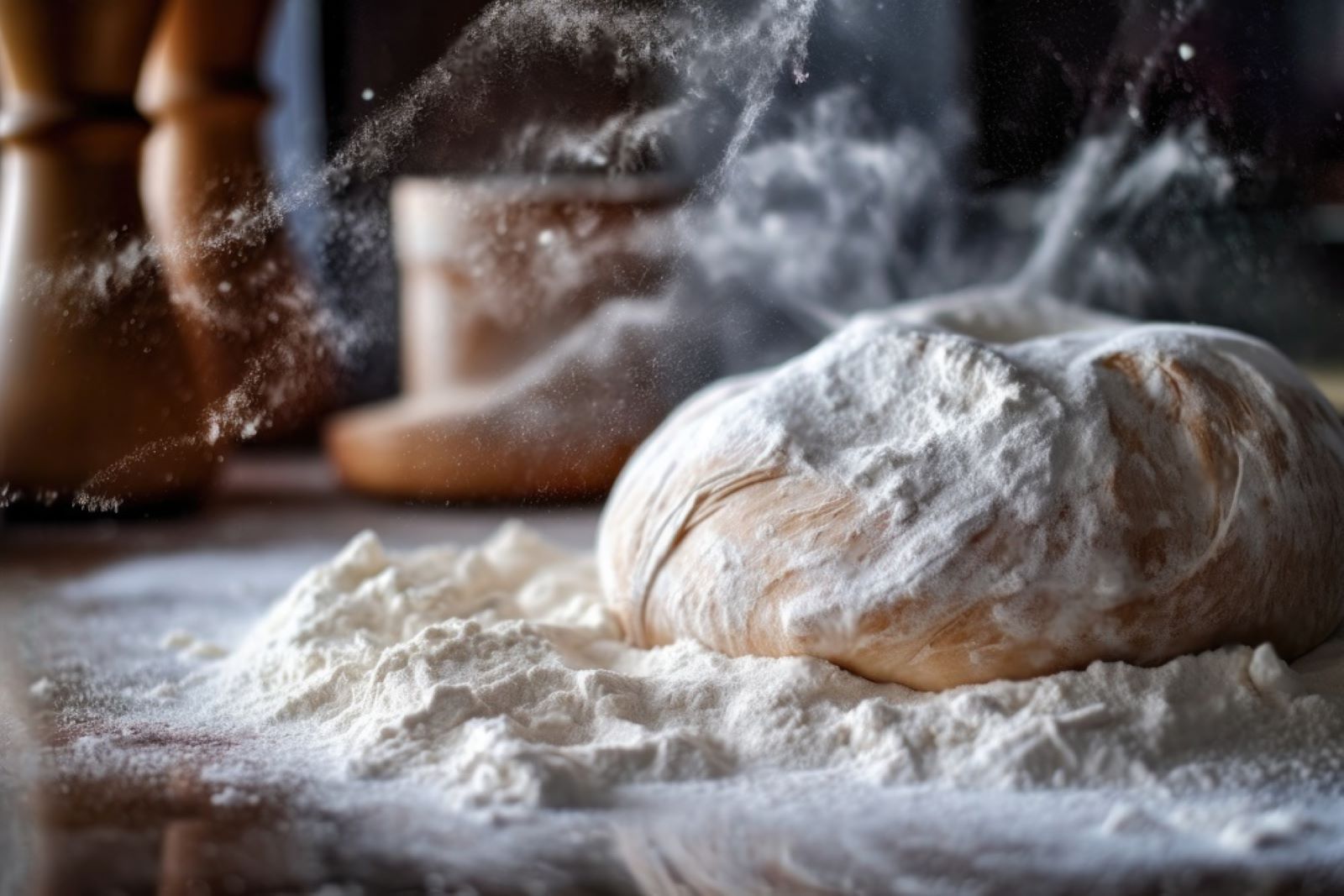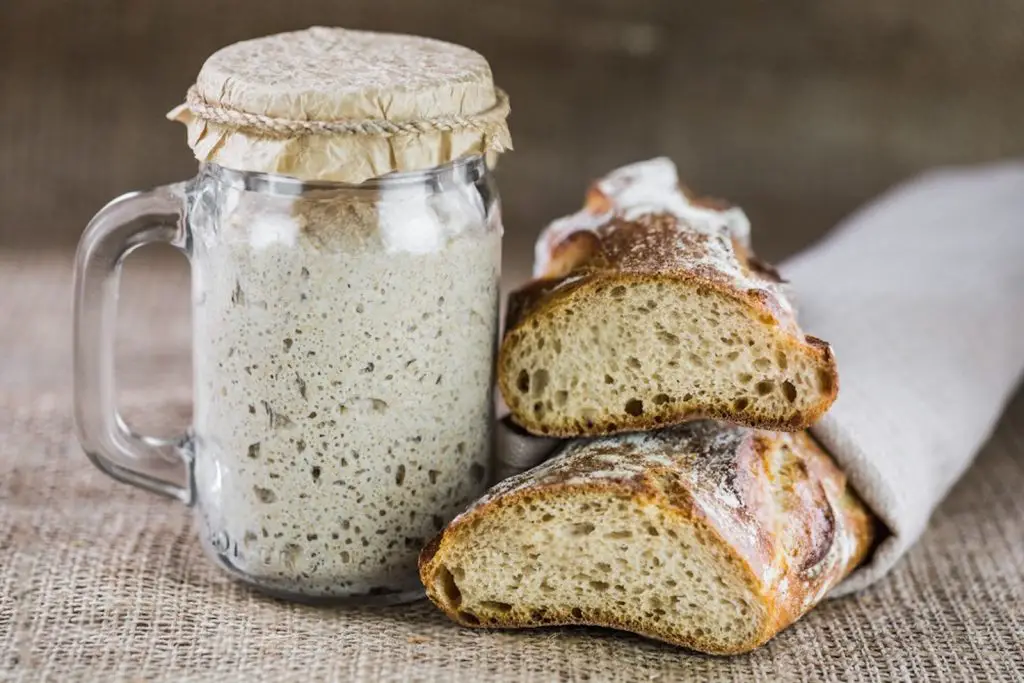
Dough for bread, the heart and soul of homemade loaves, holds the promise of warm, freshly baked goodness that fills the air with an irresistible aroma. Crafting the perfect bread dough takes time and effort, from kneading and proofing to shaping and baking. However, if you have a surplus of bread dough or want to prepare it in advance for future baking, freezing is a valuable technique. Freezing bread dough allows you to conveniently store it for later use while preserving its texture and flavor. By freezing the dough at the right stage, you can pause the fermentation process and retain its quality until you’re ready to bake. In this guide, we will explore the best practices for freezing bread dough, including proper packaging, storage techniques, and thawing instructions, so you can have a stash of homemade bread dough ready to be transformed into warm, freshly baked loaves whenever you crave that comforting taste and aroma. Join us as we venture into the world of freezing bread dough and embrace the convenience of having homemade bread at your fingertips, making it easier than ever to enjoy the simple pleasure of freshly baked bread in the comfort of your own home.
Here are the simple steps to freeze dough for bread:
Step 1: Prepare the Bread Dough
The first step in freezing dough for bread is to prepare the dough itself. You have two options: either choose your favorite bread recipe or use a pre-made dough from the store.
If you decide to make your own dough, select a recipe that you trust and enjoy. Follow the instructions carefully, measuring the ingredients accurately to ensure the best results. The recipe will typically include flour, yeast, water, salt, and possibly other ingredients like sugar or oil.
Once you have gathered all the necessary ingredients, follow the recipe instructions to prepare the dough. This often involves mixing the dry ingredients together in a bowl, proofing the yeast by dissolving it in warm water, and gradually combining the wet and dry ingredients. Kneading the dough is an important step to develop the gluten, which gives bread its structure and texture.
Make sure to follow the rising and resting times specified in the recipe. During this period, the dough will ferment, allowing the yeast to produce carbon dioxide gas and create air pockets within the dough. This process contributes to the bread’s light and fluffy texture.
By carefully following the instructions and ensuring that the dough has gone through the necessary rising and kneading steps, you set the foundation for a high-quality bread dough that will freeze well and yield delicious loaves when baked.
Step 2: Shape the Dough
After preparing the bread dough, the next step is to shape it according to your desired end result. This step allows you to give the dough its final form before freezing.
Begin by lightly flouring your work surface to prevent the dough from sticking. Carefully transfer the dough from the mixing bowl to the floured surface. Gently press down on the dough to release any excess air bubbles that may have formed during the rising process.
Now, consider the type of bread you want to create. You have various options, such as round loaves, baguettes, rolls, or even specific shapes like braided bread. To create a round loaf, tuck the edges of the dough underneath itself, rotating it as you go until you achieve a smooth, round shape. For baguettes, elongate the dough into a rectangle and then roll it up tightly, pinching the seam to seal. Rolls can be formed by dividing the dough into smaller portions and rolling each piece into a ball.
Ensure that the dough is properly formed, with no visible cracks or gaps. This step is crucial because any imperfections in the dough’s shape may affect the final texture and appearance of the bread.
By taking the time to shape the dough properly, you not only create visually appealing bread but also ensure that the dough maintains its desired form during the freezing process.
Step 3: Wrap the Dough
After shaping the bread dough, it’s essential to properly wrap it to protect it during the freezing process. This step ensures that the dough retains its moisture and prevents freezer burn, which can negatively impact the quality of the dough.
To begin, place a sheet of plastic wrap or aluminum foil on a clean surface. Carefully transfer the shaped dough onto the center of the wrap or foil. Make sure the dough is centered and there is enough wrap or foil to fully cover it.
Next, bring the edges of the wrap or foil up and around the dough, gently pressing and folding them together to create a tight seal. It’s crucial to ensure that there are no exposed areas or gaps where air can reach the dough. This will help maintain the dough’s moisture and prevent it from drying out or developing ice crystals.
For added protection, you can double-wrap the dough. Simply repeat the wrapping process with another layer of plastic wrap or aluminum foil. This extra layer acts as an additional barrier against air and helps maintain the dough’s freshness and quality.
By tightly wrapping the dough with plastic wrap or aluminum foil, you create a protective barrier that helps preserve its moisture and quality during freezing. Properly wrapped dough will maintain its texture and taste, resulting in delicious bread when it’s time to bake.
Step 4: Package the Dough
If you have prepared multiple portions of bread dough or want to freeze the dough in individual servings, it’s important to package them properly. This step facilitates easier portioning and thawing when you’re ready to bake.
Start by gathering labeled freezer bags or airtight containers that are suitable for freezer storage. These containers should be durable, moisture-resistant, and capable of protecting the dough from freezer burn.
Take each wrapped portion of dough and place it in its own labeled freezer bag. Squeezing out any excess air from the bag before sealing is crucial to prevent the dough from developing ice crystals or drying out. The presence of excess air can affect the dough’s texture and quality.
If you prefer to use airtight containers, make sure they are appropriately sized to accommodate each portion of dough without leaving too much empty space. This helps minimize the exposure to air and potential moisture loss.
Properly packaging and labeling the dough portions not only aid in organizing your freezer but also simplify the thawing process. You can easily remove and thaw individual portions as needed, without having to defrost the entire batch at once.
By dividing the dough into individual servings and packaging them in labeled freezer bags or containers, you ensure convenient portioning and maintain the quality of the dough throughout the freezing period. This step sets you up for hassle-free baking whenever you crave freshly baked bread.
Step 5: Label and Date
After packaging the bread dough for freezing, it’s crucial to label each package with important information. This step allows you to easily identify the dough and keep track of its freshness while it’s stored in the freezer.
Using a permanent marker, write the type of dough on each package. This can be a simple description such as “white bread dough,” “whole wheat dough,” or any specific type of bread you’ve prepared. The labeling helps you quickly identify the dough you want to thaw and bake without confusion.
In addition to the type of dough, it’s important to include the date it was prepared. Write the exact date on the package to ensure that you have a record of when the dough was frozen. This information is particularly helpful if you have multiple batches of dough or if you’re using a rotation system to ensure that the oldest dough is used first.
By labeling and dating the packages, you create a clear system for organizing and tracking your frozen bread dough. It saves you from the guesswork of identifying different dough types and allows you to prioritize the dough based on freshness. This way, you can easily maintain the quality and freshness of your frozen dough for a longer period.
Step 6: Freeze the Dough
Once you have properly labeled and dated the packages of bread dough, it’s time to freeze them. This step ensures that the dough is preserved at a low temperature, halting any further fermentation and maintaining its quality until you’re ready to bake.
Start by finding a flat surface in your freezer where the dough packages can be placed undisturbed. This surface should have enough space to accommodate the packages without them being crushed or bent. Removing any obstructions or unnecessary items from the designated area allows for easy access and ensures that the dough is stored properly.
Place the dough packages on the flat surface in the freezer, making sure they are arranged in a way that they lay flat. This helps maintain the shape and structure of the dough while it freezes.
Leave the dough in the freezer until it is fully frozen. The freezing time typically takes a few hours, but it may vary depending on the size and thickness of the dough portions. It’s important to ensure that the dough is completely frozen before moving on to the next step, as partially frozen dough may lead to uneven baking or affect the final texture of the bread.
By finding an appropriate space in your freezer and allowing the dough packages to freeze undisturbed, you create an optimal environment for preserving the dough’s quality. Proper freezing ensures that the dough is stored at a low temperature, maintaining its freshness and preventing any deterioration until you’re ready to bake it.
Step 7: Store in the Freezer
After the bread dough has fully frozen, it’s time to organize and store it in the freezer. This step ensures that the frozen dough is efficiently arranged, maximizing space and allowing for easy access when needed.
First, carefully rearrange the frozen dough packages in the freezer to maximize the available space. Stack them neatly, placing larger or heavier packages at the bottom to provide stability. If you have multiple portions of the same type of dough, you can stack them together.
To maintain an organized system, it’s helpful to place the oldest dough packages in the front of the freezer. This way, you can easily locate and use the dough in a first-in, first-out fashion. By prioritizing the oldest dough, you can ensure that it gets used before newer batches, maintaining freshness and preventing any dough from being forgotten and left in the freezer for too long.
Ensure that the stacked packages are stable and won’t topple over. Avoid placing heavy objects on top of the dough, as this can crush or deform the packages.
It’s important to note that the freezer temperature should be consistently set at or below 0 degrees Fahrenheit (-18 degrees Celsius) to maintain the quality and integrity of the frozen dough. Fluctuations in temperature can affect the texture and taste of the bread once it’s baked.
By organizing and storing the frozen dough packages in an orderly manner, you make efficient use of the freezer space while ensuring easy access to the dough when you’re ready to bake. This step helps maintain the quality of the frozen dough and allows you to enjoy freshly baked bread at your convenience.
How long can dough for bread last in the freezer?
Bread dough can typically be stored in the freezer for up to 3 months without significant loss of quality. However, it’s best to use the dough within the first month for optimal results. Freezing preserves the dough’s freshness, but prolonged storage can affect the yeast’s activity and ultimately impact the dough’s rising ability and texture when baked.
Step 8: Thaw the Dough
When the time comes to bake the frozen bread dough, it’s important to thaw it properly to ensure the best results. Thawing the dough gradually allows it to regain its elasticity and rise properly during the baking process.
To begin, remove the desired portion of frozen dough from the freezer. If the dough is individually wrapped, take out the specific package you want to use.
Transfer the wrapped dough to the refrigerator. Placing it in the refrigerator allows for a slow and controlled thawing process. Avoid thawing the dough at room temperature or using methods like microwaving, as these can lead to uneven thawing or partially cooked dough.
Leave the dough in the refrigerator to thaw overnight or for several hours, depending on its size and thickness. The slow thawing process allows the dough to gradually reach a workable temperature, enabling it to regain its elasticity and rise properly during baking. Thawing the dough in the refrigerator also helps prevent the growth of bacteria that can occur with thawing at higher temperatures.
It’s important to note that the thawed dough may be slightly sticky or soft, which is normal. Avoid adding excessive flour during the shaping process, as this can affect the texture and final outcome of the bread.
By allowing the frozen dough to thaw slowly in the refrigerator, you ensure that it regains its desired properties and is ready to be shaped and baked. This gradual thawing process helps the dough rise properly and results in a delicious, well-textured loaf of bread.
Other related questions
Can you refreeze dough for bread?
It is generally not recommended to refreeze bread dough once it has been thawed. Refreezing can result in a loss of quality, affecting the texture and rising ability of the dough when baked. It is best to portion and freeze the dough in smaller quantities to avoid the need for refreezing.
How do I know if the dough for bread has gone bad after being frozen?
After being frozen, bread dough may develop signs of spoilage if it has gone bad. Look for indicators such as a sour or unpleasant odor, unusual discoloration, or the presence of mold. Additionally, if the dough feels excessively slimy or sticky to the touch, it may have degraded in quality and is no longer suitable for baking. It is important to trust your senses and discard any dough that shows these signs of spoilage to ensure food safety.
Can I freeze different types of bread dough, such as whole wheat, sourdough, or brioche?
Yes, you can freeze different types of bread dough, including whole wheat, sourdough, and brioche. The process for freezing bread dough is similar regardless of the type. Prepare and shape the dough according to the specific recipe, allow it to rise, and then freeze it promptly. Keep in mind that different types of dough may have slightly different textures and rise characteristics after being frozen and thawed.
Can I freeze bread dough that has been flavored or enriched with herbs, spices, or other ingredients?
Yes, you can freeze bread dough that has been flavored or enriched with herbs, spices, or other ingredients. When incorporating flavors or enrichments into the dough, such as herbs, spices, cheese, or dried fruits, it’s best to add them during the initial mixing process. This allows the flavors to distribute evenly throughout the dough. After shaping the dough, you can freeze it following the standard freezing process.
Can I freeze bread dough that has already been proofed or fermented?
Yes, you can freeze bread dough that has already been proofed or fermented. Freezing proofed or fermented bread dough can be convenient when you want to have ready-to-bake dough on hand. Simply allow the dough to complete the proofing process until it has risen adequately. Then, shape the dough into the desired form, such as a loaf or rolls, and freeze it promptly. When you’re ready to bake, thaw the dough in the refrigerator overnight or at room temperature until it is soft and pliable, and allow it to rise again until it doubles in size before baking.








